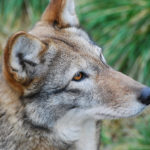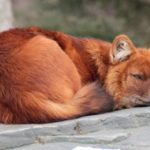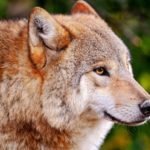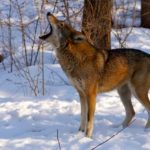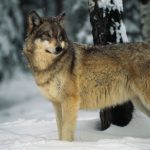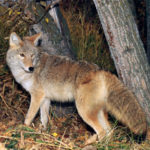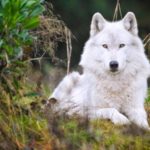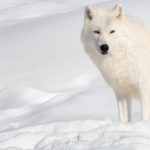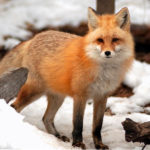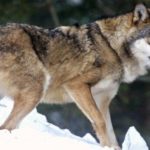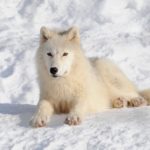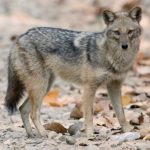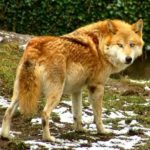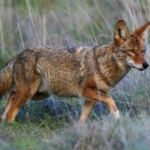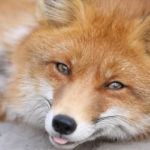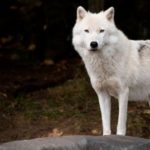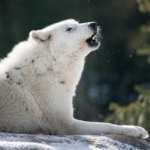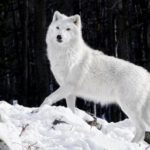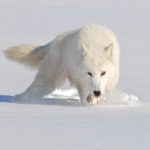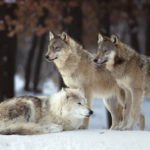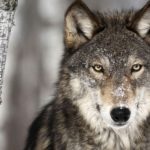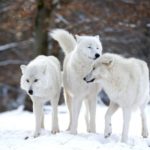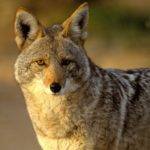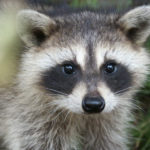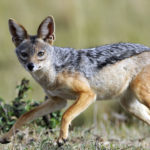Wolves
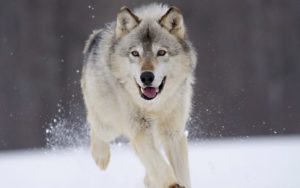 Wolves are one of the most famous and typical predators. Together with several closely related species – jackals, coyotes, wild dogs – they are part of the wolf family. In the world there are only 2 kinds of real wolves – gray and red. They can also be categorized as a coyote, which in fact is not much different from typical wolves. The appearance of these animals does not need a detailed description. They are characterized by all the signs of true predators: a dense but harmonious trunk, relatively long legs, an elongated muzzle, armed with a set of sharp and large teeth.
Wolves are one of the most famous and typical predators. Together with several closely related species – jackals, coyotes, wild dogs – they are part of the wolf family. In the world there are only 2 kinds of real wolves – gray and red. They can also be categorized as a coyote, which in fact is not much different from typical wolves. The appearance of these animals does not need a detailed description. They are characterized by all the signs of true predators: a dense but harmonious trunk, relatively long legs, an elongated muzzle, armed with a set of sharp and large teeth.
The claws of wolves are grinding from the contact with the ground, so they are relatively stupid. These signs indicate a mobile way of life and a pronounced carnivore of these animals. The color and size of wolves vary greatly depending on the terrain where they live. Thus, northern populations have large sizes and a light, almost white color of wool; Wolves of temperate latitudes are usually gray, sometimes they come across completely black individuals; Wolves from the southern regions are small, with red or brown hair.
The range of wolves covers the vast expanses of the Northern Hemisphere, but in some parts of the range (Western Europe, British Isles), they are completely exterminated. These animals live in various landscapes – in the tundra, forests, mountains and steppes. Wolves lead a sedentary life, but in search of food can roam for long distances. In general, these animals are characterized by great mobility: in search of food wolves can go almost a whole day without rest, overcoming at once to 50-60 km. Special mention should be made of extreme endurance and vitality of wolves: a hungry wolf without food is able to maintain full activity for up to 10 days, he is wounded for several kilometers from hunters, surrounded by dogs fiercely defends to the last drop of blood, and caught in a trap – nibbits his paw to leave From the pursuers.
There are cases when a wolf, having received a fracture of the paw during a hunt, remained lying on the ground, he stayed for 17 days, after which, as if nothing had happened, he continued searching for the prey. Such a will to live is amazing! But the wolves also have secret weaknesses: strangely enough, but these brave predators graze before the appearance of a rag rag. This feature formed the basis for the famous hunt for wolves with flags. In this case, hunters, after discovering a pack of wolves, encircle it (along the perimeter) with a stretched rope with rags of cloth. Wolves, seeing the fluttering matter, do not dare to jump over the flags and hunters shoot animals at close range.
Wolves are schooling beasts. Each flock consists of several wolf families – the parent couple and the grown young – and has from 7 to 30 individuals.
The life of a pack is very complex and is repaired by internal “wolf” laws. The expression “wolfy law” became a household word for injustice and lack of principle. But do wolves really live like this? Observations show that in reality the situation is exactly the opposite. All the behavior of the school is subject to strict discipline and a clear hierarchy. In the pack there is a dominant pair of wolves (the so-called alpha male and alpha female), their behavior regulates the mode of life of other animals. The leader guides the pack to the hunt and takes the most active part in it, he is the first to proceed with the division of the prey.
